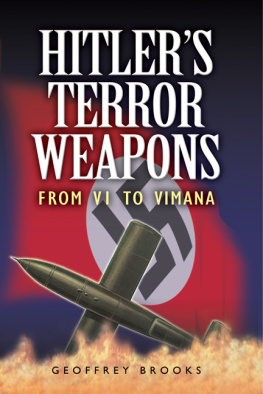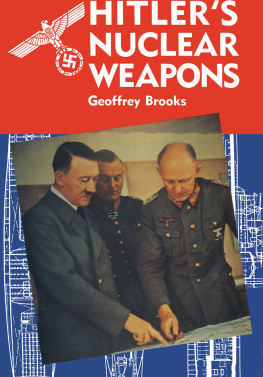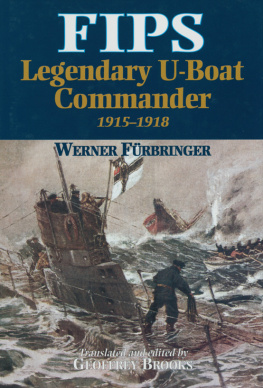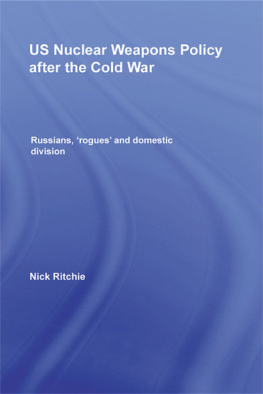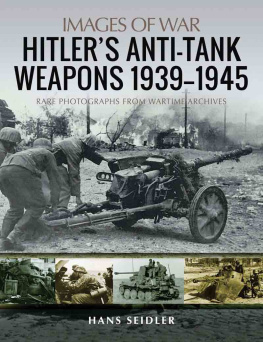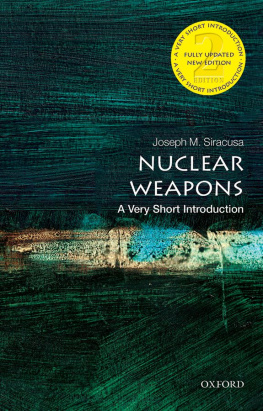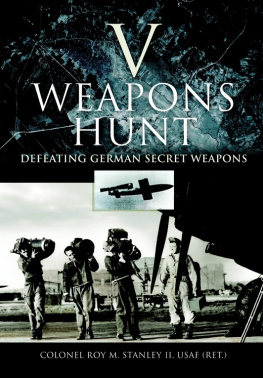
by the same author
Hitlers Nuclear Weapons
(Leo Cooper, 1992)
Hirschfeld The Story of a U-boat NCO 19351945
(Leo Cooper, 1997)
FIPS Legendary U-Boat Commander, 19151918
(as translator Leo Cooper, 1999)

First published in Great Britain in 2002 by
LEO COOPER
an imprint of Pen & Sword Books
47 Church Street,
Barnsley, South Yorkshire S70 2AS
Copyright 2002 Geoffrey Brooks
ISBN 0 85052 896 8
eISBN 978 1 78337 933 0
A CIP record for this book is available from the British Library
Typeset in 10/12pt Times by Phoenix Typesetting, Ilkley, West Yorkshire
Printed in England by
CPI UK
Dedication
I dedicate this book to the memory of Lt Charles Taylor USN, Senior Qualified Flight Instructor, Squadron 79M, Fort Lauderdale who, together with the thirteen men of TBM Avenger overwater navigational training flight 19, died on the evening of 5 December 1945 as the result of entering an anomalous gravity field near Great Stirrup Cay, Bahamas at about 3:15 that afternoon.
Contents
Acknowledgements
I acknowledge a debt of gratitude to nuclear physicists Pat Flannen, whose speculation about Heisenbergs experiments at Leipzig inspired this book initially, and Norberto Lahuerta, for his unstinting help with research and scientific opinion into all aspects of both V-4 projects.
I add a special note of appreciation to Brigadier Wilson, Barbara Bramall and Tom Hartman for their help and patience in coping with many late but unavoidable additions and deletions, and to Pen & Sword for having the courage to publish a book of this kind.
Introduction
F ollowing the landings in France in 1944, the Combined Chiefs of Staff set up a number of military-civilian teams, termed the Joint Intelligence Objectives Committee, to follow the invading Allied armies into Germany with a view to seizing all Hitlers military, scientific and industrial secrets for early use against Japan. The teams worked against the clock to obtain the most vital information before it was destroyed. The result was the biggest collect of captured enemy war secrets ever assembled. One Washington official called it the greatest single source of this type of material in the world, the first orderly exploitation of an entire countrys brain-power. The Office of Technical Services, the Washington government agency originally formed to handle the collection, reported that tens of thousands of tons of material was involved. It was estimated that over a million separate items had to be handled and they most likely represented practically all the scientific, military and industrial secrets of Nazi Germany. In A Brief History of Air Force Scientific and Technical Intelligence, published by NAIC, the National Air Intelligence Centre, it was recorded that in 1946 at Wright Field alone, three hundred people processed over 1500 tons of documents, adding 10,000 new technical terms to the English language. The technical knowledge from these documents revolutionized American industry.
In the summer of 1944, at about the time the JIOC was set in motion, the German High Command began to contemplate the eventuality of defeat and in September that year a General Plan was elaborated to evacuate Nazis, Third Reich capital and highly advanced technical and scientific knowledge to places selected by Hitler himself, of which Argentina was the principal destination. The strategist of the General Plan was Hitlers personal ADC, Martin Bormann. The so-called Rat Run to Argentina was operated through the consulates of that country in Italy and Rome and facilitated the escape of wanted war criminals. But the Rat Run, known to the Germans under the codename Regentroepfchen (raindrop), was a fronting operation concealing a much vaster programme aimed at retaining for Nazism in exile its financial wealth, the scientific, political and military elite of the Third Reich and certain hyper-secret specialized knowledge. This latter was of a level above and beyond the million or so secret inventions and patents to be abandoned to the Allies. Code-named Aktion Wiking, this section of the overall plan was begun in September 1944 by Maximilian Erth with the assistance of Philip Bouhler (head of Hitlers private office) and the Gauleiter of Lower Silesia, Karl Hanke.
The Nazis were particularly anxious to protect documents containing the highest classifications of secret knowledge designated Geheime Reichssache relating to the development of arms, aircraft and submarines. The most important of all these, files relating to a super aviation fuel and advanced aircraft, went by long-range Junkers Ju 390 transport aircraft directly to Argentina.
From the point of view of the US Government, the 260 tons of strategic material aboard the German U-boat U-234 escorted into Portsmouth Navy Yard, New Hampshire, on 19 May 1945 is so absurdly secret that the fact that it is classified as top secret is a secret, as are the documents pertaining to Dr Heinz Schlicke and the nature of the assistance he afforded the Manhattan Project in the three months after his capture. The most secret item of cargo aboard U-234 remains the eighty small cases of uranium powder which have never appeared on any USN Unloading Manifest and which will have been the fissile material for a rudimentary atomic explosive. But as far as the German High command was concerned, the voyage of this U-boat with its extraordinary cargo of war materials and passengers did not rate so highly as to fall within the ambit of the General Plan of Evacuation.
In the 1950s two crewmen of the former pocket battleship Admiral Graf Spee Rudolf Walter Dettelmann and Alfred Schultz, interned in Argentina, swore statements to an Argentinian commission of enquiry to the effect that on 28 and 29 July 1945 they carried out naval duties in connection with the arrival on the Patagonian coast of two U-boats of an alleged six which escaped from Europe loaded with gold bullion and passengers. Extensive sonar sweeps along the inshore coast of Patagonia in March 2002 have resulted in a contact which, pending visual confirmation, will probably be a U-boat believed scuttled in these coordinates in July 1945. As it is neither of those mentioned by the two Graf Spee crewmen, it is clear that the General Plan was put into effect.
A leftist correspondent of a leading Neuquen daily newspaper active in exposing Nazi war criminals in the Bariloche area of Argentina and who prefers anonymity for that reason has stated in writing that he inspected official documents confirming that the German anti-gravity experiments SS-E-IV and SS-U-13, together with the notorious Bell described elsewhere in this volume, arrived aboard a Junkers Ju 390 long-range transport aircraft which flew non-stop from Norway to Gualeguay aerodrome in Entre Rios province, Argentina, at the wars end. If true, this might be seen by some as suggestive that the SS anti-gravity aircraft project was the post-war utmost priority for the National Socialist scientific elite.
Just a few days after the Nagasaki bombing in August 1945 the US authorities interrogated a German flak rocket expert whom they named only as Zinsser, a trained observer of aerial explosions. The interview document has a high reliability rating. During the interview Zinsser described certain characteristics of an A-bomb test he claimed to have observed over Germany in 1944 which he could not possibly have known about unless he had actually witnessed such an explosion. A nuclear weapons physicist whose opinion I sought thought that a small, possibly one-kiloton, device was being described, although the signs to look for were buried in the text and would elude the casual, unscientific reader of the document such as myself. That is the reason why its significance has been overlooked until now.
Next page
